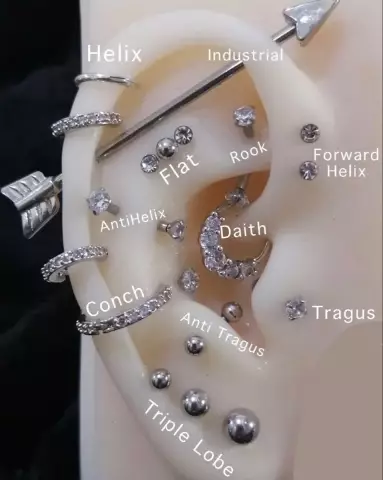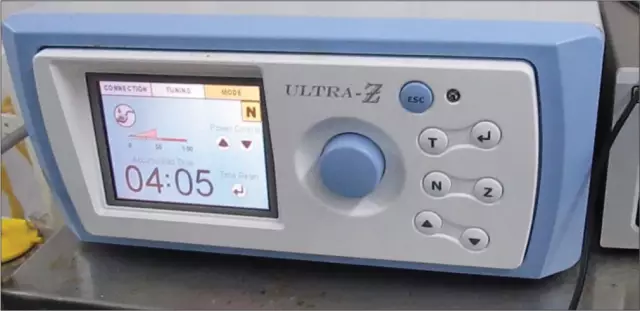- Author Rachel Wainwright [email protected].
- Public 2023-12-15 07:39.
- Last modified 2025-11-02 20:14.
Bioepilation
Bioepilation concept

Bioepilation is understood as the procedure for removing unwanted hair from various parts of the body using wax mixed in a special proportion with auxiliary components.
The progenitor of bioepilation was Queen Nefertiti, who conquered her contemporaries with her beauty. She removed hair from her body using a viscous aromatic mixture, the recipe for which, unfortunately, has not reached our times. Today, bioepilation (or, as it is also called, waxing) means hair removal with hot, warm or cold wax.
The effect of bioepilation, depending on the individual characteristics of the body, lasts about 3-5 weeks, since during this procedure the hair follicle does not suffer, only its shaft is removed. After this period of time, the hair grows back, however, now it is less pigmented and coarse. After several treatments, the amount and density of body hair is significantly reduced.
There are three types of bioepilation, depending on the temperature of the composition used:
- Firm (hot) - preferable in the presence of thick hair;
- Warm (low temperature) - carried out with thin hair;
- Soft (cold) - intended for sensitive skin, removes its stratum corneum and makes it velvety.
For cosmetic purposes, two types of wax are used: hard and soft.
- The basis of hard wax is pine resin or petroleum products with the addition of lemon or vegetable oil. The product, heated to a temperature of 38-41 degrees Celsius, is applied to the skin in the direction of hair growth. Thanks to the rubber inserts, the hard wax exactly matches the skin's relief. According to reviews, bioepilation with hard wax is more likely intended for hair removal in hard-to-reach places (bikini area, in armpits);
- Soft wax consists of pine resin mixed with softeners. This mixture is produced in special cans or roller cassettes, heated in a special heater and applied to the skin against hair growth. The wax remaining after the procedure is removed with a soothing oil on the upper layer of the epidermis.
Bioepilation is a safe but painful procedure. The most severe pain occurs when treating the face (nose area), armpits, and bikini bioepilation. For women with a low pain threshold, experts recommend prescribing a bioepilation session in the middle of the menstrual cycle, since it is on these days that the pain threshold rises.
Bioepilation procedure
The essence of bioepilation is as follows: wax penetrates the hair follicle, covers it and hardens, after which the wax is removed with a sharp movement along with unwanted hair. For the procedure to be successful, the minimum hair shaft length must be 5 mm.
While the wax is heated in special equipment, the patient's skin is treated with a lotion that removes the remains of cosmetics and sebum, which allows the wax to adhere more tightly to the hairs.
The wax is applied to the body with a wooden spatula or cartridge in the direction of hair growth. After the mixture has hardened, the specialist with a sharp movement against hair growth removes the wax with a strip of paper ("napkin") along with the vegetation.
After the bioepilation procedure, the skin is treated with soothing agents that eliminate irritation and pain in the treated area.
According to reviews, bioepilation is suitable for removing hair from parts of the body such as:
- Chin;
- Lips;
- Armpits;
- Back;
- Arms;
- Rib cage;
- Face;
- Legs.
Bikini Bioepilation

There are also deep bioepilation or bikini bioepilation. This procedure means hair removal not only in the inner thighs, but also in more intimate places - in the area of the pubis, labia, anus and perineum. To minimize pain in this - very sensitive - zone, it is recommended to do deep bioepilation with a sufficient length of hairs - at least 7-10 mm. It is possible to reduce painful sensations if you use special anesthetic gels during the bioepilation procedure.
Deep bioepilation (Brazilian) is performed with sugar wax - the least painful remedy from the existing ones, which does not cause irritation and allergic reactions. However, experts do not recommend using this procedure for people with overly sensitive skin.
Bioepilation of the bikini area is a rather complex procedure, which implies compliance with sanitary and hygienic standards, accuracy and confidentiality, which should be entrusted to a specialist.
Contraindications
Despite the fact that bioepilation, according to reviews, is a simple and safe procedure, a session of getting rid of excess hair in a physical way has its contraindications. These include:
- Phlebeurysm;
- Wounds and inflammatory skin reactions;
- Diabetes;
- Epilepsy;
- Violation of peripheral circulation;
- Benign skin neoplasms (warts, moles, papillomas);
- Severe forms of hypertension and ischemic disease;
- Individual intolerance to the components that make up the wax.
Found a mistake in the text? Select it and press Ctrl + Enter.






